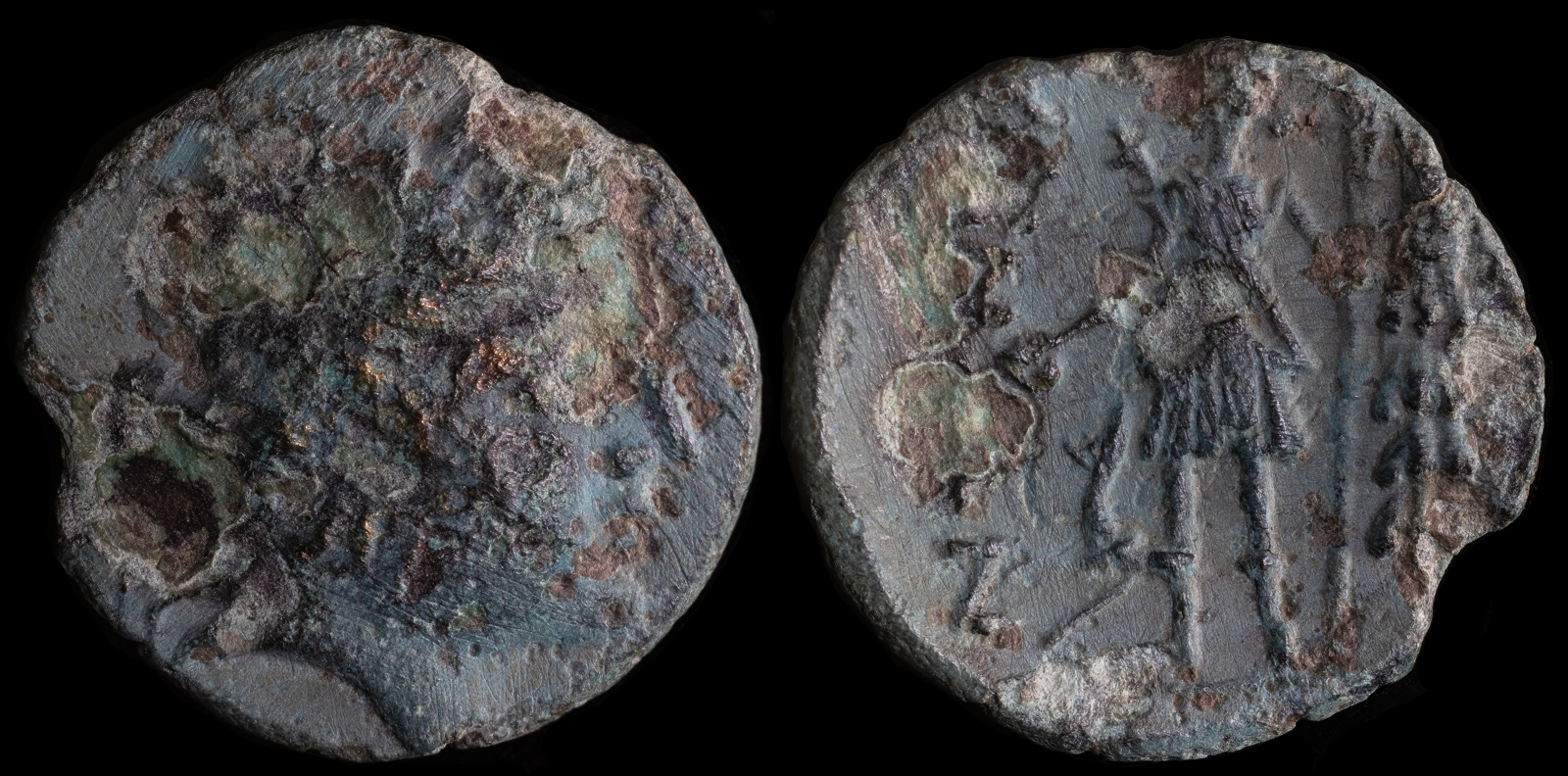
Thrace. Kabyle
circa 275-250 BCE
Æ 18 mm, 2,98 g
Laureate head of Apollo to right /
Artemis standing to left, holding a phiale and torch; stag to left, uncertain object to right; [K]AB[Y] to right, ΛHNΩN to left.
Cf. SNG BM Black Sea 193; cf. SNG Stancomb 54; cf. HGC 3.2, 1464
Kabyle was used as a capital by many of the Odrysian and Thracian kings. Today, the ruins are well preserved and are a tourist site in Bulgaria.
In 341 BCE, Kabyle was taken and fortified by Philip II. It is not believed to have minted its own local coinage (though may have minted their silver coinage) during his rule or Alexander III. After Alexander’s death, control passed to Lysimachos.
After his death in 281 BCE, the city briefly came under the rule of the Celtic king Kavaros, then became the seat of the Odrysians. It was roughly during this period that this coin was minted in the name of the city. Outside of that, the vast majority of its coinage was minted for a particular ruler.
The city of Kabyle is established.
Kabyle conquered by Philip II.
Romans under Lucullus occupy Istros and Kabyle.
Thrace is annexed by the Roman Empire, bringing Agathopolis, Aigiospotamoi, Kabyle, Deultum, and Perinthos under its rule.